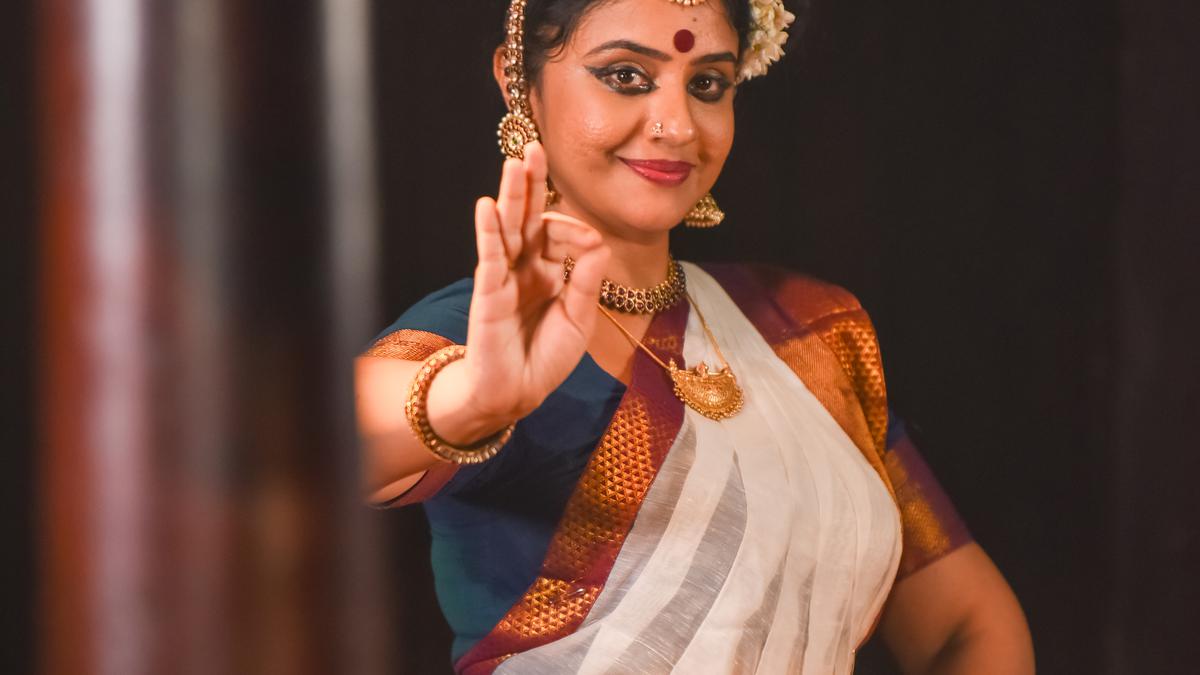
Methil Devika’s ‘Crossover’, amalgamates Indian Sign Language with hastha mudras of Indian classical dance
The Hindu
Methil Devikas Crossover merges Indian Sign Language with hastha mudras of Indian classical dance
There may be no conversation, but their expressions say it all as the audience reacts to danseuse Methil Devika’s new choreography. With fingers that move at lighting speed, the audiences speak to her about their thoughts on ‘Crossover’, her new production that was premiered at the Tanjavur Amma Veedu in Thiruvananthapuram.
An amalgamation of Indian Sign Language and conventional hastha mudras (hand gestures) from scriptures on aesthetics and traditional practices, Crossover, choreographed by Devika, narrates the advent of Lord Krishna. The 20-minute film includes a dance that integrates Indian Sign Language in one of the choreographies from her large repertoire of original works.
Devika explains, “It’s a simple story that is familiar to most Indians. Focussing on the moments before and after he is born, I depict changes in Nature and in the minds of his parents. The recital is danced to a Bhramaniamma paatu sung by women of a particular community in Kerala.”
Devika says she was motivated to take this step during one of her lecture-demonstrations in Gujarat when she had a group of hearing-impaired in the audience. “I felt challenged when I could not communicate the story to them. “ Dismayed that most of them were unable to connect with the performance, she put on her thinking cap to design a programme that is inclusive and can resonate with the hearing-impaired as well. Not one to rest on her laurels, Devika has been constantly been pushing the boundaries of traditional Mohiniyattam with her innovative productions.
To begin with, she started familiarising herself with Indian Sign Language, used by the hearing-impaired in India to communicate.
Devika says, “Every time I perform, it is important my recital strikes a chord with the audience. So, then and there, I decided that when the time is right, I would do something to address this.”
Although she reached out to the authorities to find out if they would be interested in a project that developed a dance vocabulary that appealed to the differently-abled as well, there was hardly any response from them.













